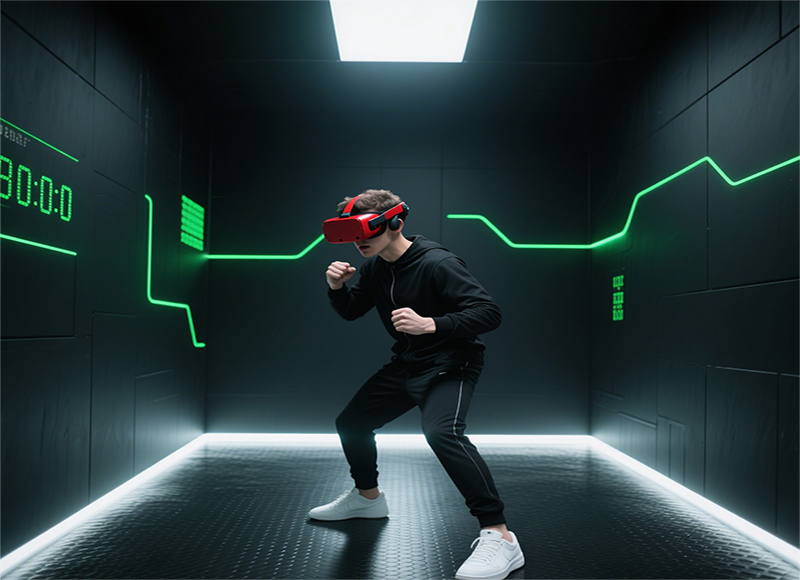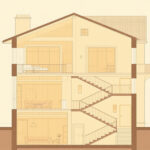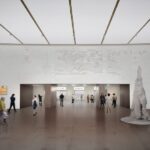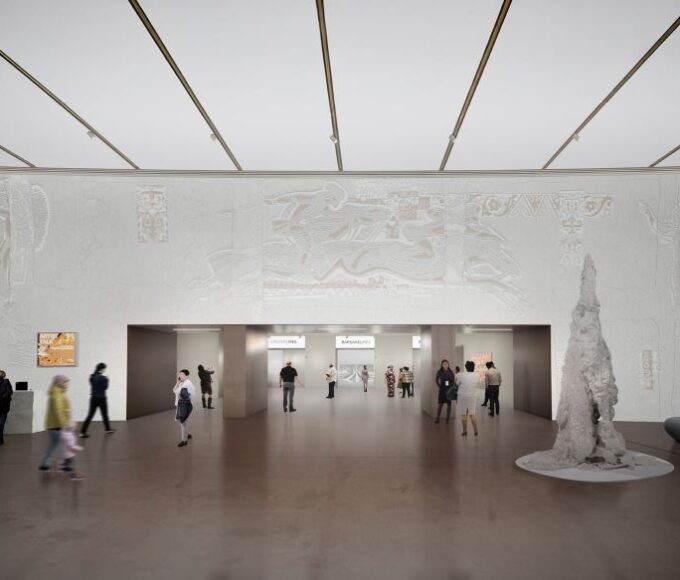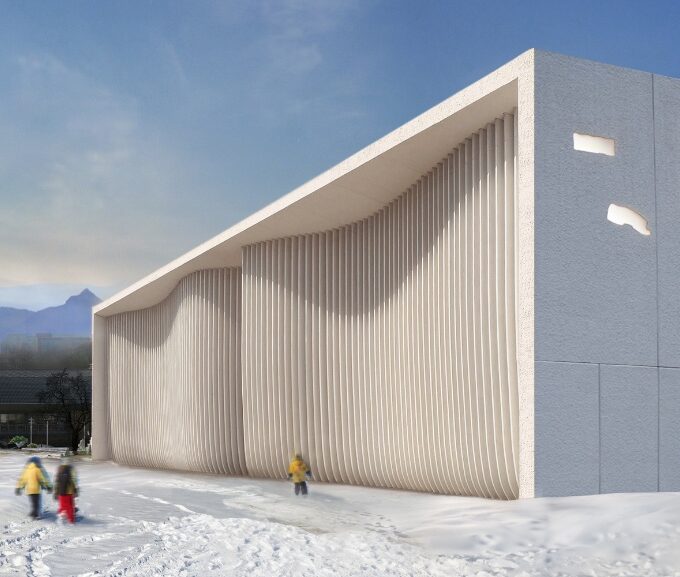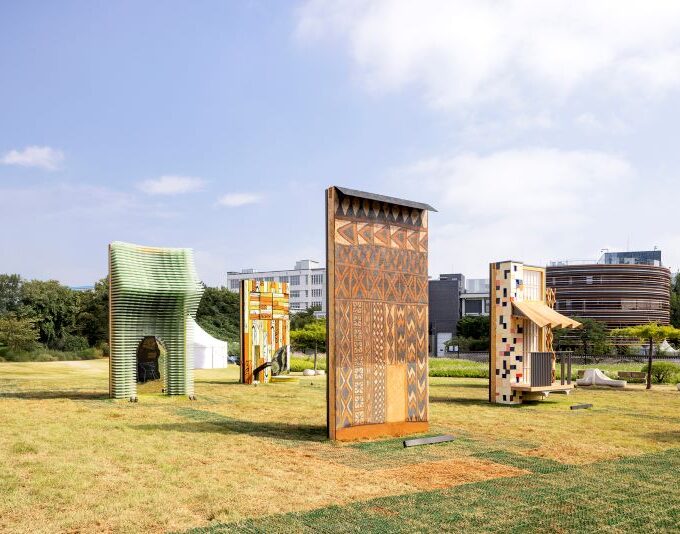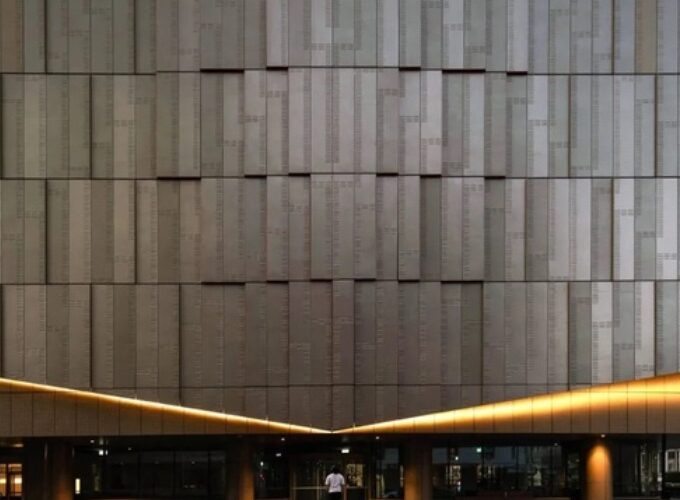Architectural design, as both a spatial and functional art, is being reshaped by emerging technologies. In today’s accelerated digital landscape, virtual reality (VR) and augmented reality (AR) are transitioning from cutting-edge concepts to practical applications, particularly in the architecture industry, where they demonstrate powerful transformative potential. From conceptual design and client communication to construction collaboration, VR and AR are redefining the architectural design process, making spatial concepts more intuitive, interactive, and perceptible. These two technologies do not exist in isolation but are driving a profound architectural transformation through integration with other digital tools.
A Revolution in Spatial Experience: Immersive Design
Traditional architectural representations rely on drawings, renderings, or physical models. While these methods communicate design intentions, they often fail to convey the true scale and atmosphere of a space accurately. VR technology breaks this limitation. At its core, VR leverages computer graphics, sensor technologies, and stereoscopic display systems to build highly realistic 3D virtual environments. By importing 3D models into a virtual space, designers and clients can wear head-mounted displays to “walk through” a building, simulate movement paths, observe lighting changes, and feel material textures. This immersive experience not only enhances the accuracy of design validation but also makes abstract spatial ideas more tangible.
In practical design processes, the advantages of VR become even more apparent. Designers can simulate lighting conditions at different times of day, analyze natural light distribution inside a building, and accurately adjust the size, position, and orientation of windows. Material selection is no longer limited to notes on flat drawings; VR enables a realistic sense of visual and tactile quality, allowing more informed and creative decisions. Unlike 2D plans, VR spaces unfold in all directions, enabling users to evaluate every detail from a first-person perspective. Early-stage issues such as scale inconsistencies, blind spots, or inefficient circulation are easier to identify in VR, allowing for timely adjustments before construction documents are finalized, saving both time and costs. According to relevant research, using VR for design optimization can reduce the number of design revisions by an average of 30% to 40%.
A Bridge for Client Communication: Visualized Augmented Reality
AR, on the other hand, overlays virtual models onto real-world environments. Using a tablet or smartphone, users can “see” what a future building will look like on-site. This technology is especially suitable for showcasing urban renewal, landscape design, or street-facing projects, allowing clients to intuitively experience how a design integrates with its surroundings. AR is powered by computer vision and spatial positioning algorithms that accurately detect objects and space in the physical environment and overlay digital information accordingly.
For non-professional clients, AR lowers the communication barrier by eliminating reliance on interpreting drawings. Instead, it offers a “what you see is what you get” experience that fosters active participation in the decision-making process. It transforms clients from passive reviewers into active participants, enhancing project transparency and building trust and satisfaction. As ArchDaily has noted, the application of AR in architectural presentation is changing how clients respond to design proposals, making the decision process more efficient and intuitive.

A New Mode of Design Collaboration: Digital Sharing and Remote Review
Beyond visualization, VR and AR play a critical role in design collaboration. In large-scale architectural projects involving multiple parties, such as design teams, structural consultants, and owner representatives, traditional collaboration methods often suffer from inefficiencies due to geographic separation. VR enables team members to access shared virtual environments remotely via the internet, view design content in real time, annotate issues, and provide feedback, dramatically reducing communication cycles. This remote collaboration model, supported by cloud computing and high-speed networks, ensures seamless interaction among participants across different regions.
These technologies also help break down information silos between architecture, structural engineering, MEP systems, and other disciplines. By integrating Building Information Modeling (BIM) with VR/AR, complex systems can be visualized, facilitating interdisciplinary collaboration and improving the overall consistency and implementation of design solutions. In virtual environments, professionals can examine the model from various perspectives to identify potential design conflicts and resolve them collaboratively. For example, architects can directly see how structural elements impact interior space, and MEP engineers can pre-plan conduit layouts to prevent conflicts and avoid costly rework during construction.
From Design to Construction: Enhancing Accuracy and Efficiency
In the construction phase, AR proves highly valuable. By overlaying digital models onto physical job sites, workers can view wall layouts, piping paths, and other concealed details directly, reducing dependence on paper blueprints and increasing construction precision. AR technology uses location markers, or the GPS and motion sensors on mobile devices, to align virtual content with the physical environment. Workers simply use a smartphone or tablet to access detailed construction information and instructions, minimizing errors caused by misinterpretation.
AR also supports real-time verification during construction, detecting deviations and enabling quick corrections, significantly reducing rework at the source. During project handover or inspections, AR can compare as-built results with the design model and identify discrepancies. Scanning with AR devices helps quickly pinpoint deviations and generate inspection reports. Meanwhile, VR serves as a simulation platform for worker training or procedural rehearsals. In a VR training environment, construction workers can repeatedly practice complex operations, familiarize themselves with procedures and safety protocols, and improve their skills and ability to respond to unexpected scenarios.
Extending to Architectural Education and Research
VR/AR is not limited to professional practice—they also play an increasingly important role in architectural education. Design schools are creating digital classrooms and virtual exhibition halls using VR, allowing students to design, build, and present entire spatial projects without relying on physical models. This method reduces material costs while expanding the scope and depth of visual expression. In virtual classrooms, students can explore architectural spaces through VR equipment, conduct virtual field studies, and develop spatial awareness and design thinking.
AR also enriches on-site learning. Students can use AR to observe reconstructions of historical structures or witness urban transformations in real locations, such as ancient ruins or modern city squares. These tools enhance the understanding of architectural history and spatial composition. In the future, VR/AR may become standard in architectural education, cultivating a new generation of designers with strong spatial comprehension and digital literacy. For instance, in architectural history courses, AR enables students to view how ancient buildings evolved over different periods, gaining deeper insight into style transitions and cultural significance.
Driving Architecture Toward Intelligent Design
As advanced visual interaction technologies, VR and AR are increasingly integrating with artificial intelligence (AI), the Internet of Things (IoT), and other innovations, pushing architecture toward intelligent design. Algorithms can generate design options, data can guide optimizations, and real-time interaction enables agile iteration. In this future-oriented model, architects evolve from drawing makers to system orchestrators.
In next-generation design scenarios, users may use voice or gestures in AR environments to express their needs, while AI adjusts model parameters in real time, turning architecture into a responsive, modifiable, and feedback-driven smart space. This human-machine collaborative design approach empowers creativity and expands the architect’s role from “drawing the building” to “defining spatial logic.” In smart home design, for instance, users can request functional changes in AR, and AI systems adjust layouts and configurations accordingly to deliver personalized smart environments.

Popularization and Challenges Ahead
Despite its promising future, VR/AR still faces real-world obstacles in architectural applications. High equipment costs, limited model processing capacity, and user learning curves can hinder widespread adoption. High-end VR headsets and AR glasses remain expensive, which presents a financial barrier for small design firms or educational institutions. Additionally, large architectural models can be slow to load and render, affecting user experience.
Compatibility among various software platforms, data format standardization, and interactive protocol development remain pressing industry needs. With so many different design tools in use, data exchange and integration issues often lead to loss or incompatibility during VR/AR implementation.
Moreover, achieving high-quality immersive experiences requires advanced rendering capability and modeling precision, raising the bar for design teams’ digital skills. Thus, establishing stable, efficient, and sustainable application frameworks is essential. Design professionals must deepen their technical understanding and skillsets in VR/AR while the industry works together to create standards and best practices for consistent adoption.
Conclusion: Reimagining Architecture Through Technology
VR and AR are far from superficial trends. They bring unprecedented possibilities to architectural design by enabling immersive, visual, and interactive experiences. Spatial concepts become tangible, client participation shifts from passive approval to active engagement, collaboration becomes smoother, and education gains new dimensions.
With the ongoing evolution of technology, VR and AR will play an even more significant role in shaping architectural workflows, helping designers create smarter, more beautiful, and more sustainable spaces, and driving the architecture industry toward an increasingly digital and intelligent future.


